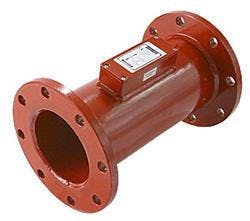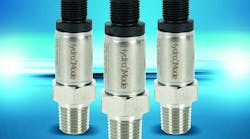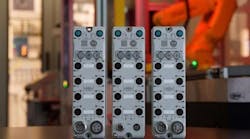Ultrasonic Flow Transmitters Designed For Process Applications
Feb. 19, 2010
Related To: Clark Solutions
Clark Solutions announces the availability of a new line of ultrasonic flow transmitters ideally suited for use in process systems. These transmitters are easy to install, do not impact the flow, pressure, or transit times of fluids, and are unaffected by fluid temperatures or viscosities, making them ideal for measuring flow ranges from 4.5 to 3000 GPM in 4” to 10” pipe.Like all Clark Sonic Ultrasonic Flow Transmitters, Model CSLFC Transmitters feature no moving parts, excellent long-term stability, no pressure drop, and high accuracy at a lower cost than similar instruments. Built out of Schedule 40 epoxy coated carbon steel, CSLFC Transmitters feature ULTEM® encapsulated ultrasonic transducers with a choice of EPDM, Buna-N, Neoprene™, FKM, or other seals. Clark Sonic Model CSLFC Transmitters provide a continuous 4-20mA flow signal. Available options include direction of flow capability, NEMA 4 and 8 pin connector receptacles for simplified installation, and a DP/DS Panel Meter/Display. Model CSLFC Transmitters are available for purchase online at http://www.clarksol.com/html/cslfc.cfm






